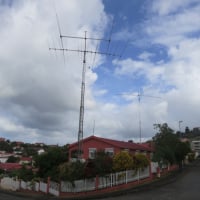SmartSDR v4.1.3 | SmartSDR v4.1.3 Release Notes
SmartSDR v3.10.15 | SmartSDR v3.10.15 Release Notes
The latest 4O3A Genius Product Software and Firmware
Need technical support from FlexRadio? It's as simple as Creating a HelpDesk ticket.
Problem with install 2Tone, RTTY, N1MM and FLEX6400
I'm installing RTTY with N1MM for my FLEX6400.
Here I use for the manual:
EZ Start Setup for RTTY With N1MM + for FLEX-6000 or Hicks, N5AC. URL: https: //edge.flexradio.com/www/uploads/20200818185018/Operating-RTTY-and-N1MM-for-the-FLEX-6000-How-to-Guide.pdf
I've installed all necessary hardware / software, N1MM +, MMTTY, 2Tone etc. in accordance with this manual.
The description of the 2Tone installation seems incomplete to me:
..... Double-click 2Tone to start the decoder ........
I get the error:
"2Tone does not work standalone, the with a logging program like N1MM + "
In itself that is understandable, but in the manual I don't find anything about starting N1MM or MMTTY ??
Does anyone know what's going wrong and maybe a clearer tutorial on this topic?
Thanks in advance for any response,
Cees, PA3CVI
Comments
-
You can only use it with N1MM, so just open N1MM first and configure it and it will run fine.
0 -
sorry Rich, thanks for your response, but I can't do much with this
0 -
https://youtu.be/QBmBlMaVJzc
This was the video Mike did on setup.
0 -
Hi Rich,
yes, this was the information i was looking for.
Everything is now working properly.
I've searched a lot on the internet for manuals that my FLEX6400 can learn to communicate with WST-X, F8 Mode.
To date I've not yet found a document that briefly and clearly explains the installation.
I was forced to but started to write my own manual.
Thanks again Rich. 😉
0 -
Glad you got it working.
For any digital mode on any radio, you need the following:
RX Audio
TX Audio
PTT to put the radio into Transmit
Optional is Radio CAT control (you can live without it)
In this video, I show you how to connect FLDigi https://youtu.be/G9iDbcD-QgQ but the steps apply to each and every Digital program equally.
You have to Select the RX Audio path (A windows sound card device in each case)
You have to Select the TX Audio path (A windows sound card device in each case)
How to get the radio into TX - there are several ways and the simplest way is to have the Digital program you are interested in sending a CAT command to the radio CAT port.
Take it 1 step at a time. Start with the RX audio and get it working. Then, build from there.
Ask questions if you get stuck.
1 -
Mike, still looking for your comments about how you set up FLDIG in your setup- i.e. rigcat vs hamlib... see my post please.
73 de KM0T
0 -
@Mike The Flex SDR is a fantastic radio. What surprises me the most is that all communication takes place via just one USB connection, including the audio control. Thanks to your vid I was quickly QRV in FT8 mode. You did a great job thanks. Cees, PA3CVI
0
Leave a Comment
Categories
- All Categories
- 378 Community Topics
- 2.1K New Ideas
- 630 The Flea Market
- 8.2K Software
- 116 SmartSDR+
- 6.4K SmartSDR for Windows
- 183 SmartSDR for Maestro and M models
- 428 SmartSDR for Mac
- 271 SmartSDR for iOS
- 258 SmartSDR CAT
- 191 DAX
- 382 SmartSDR API
- 9.3K Radios and Accessories
- 37 Aurora
- 256 FLEX-8000 Signature Series
- 7.2K FLEX-6000 Signature Series
- 945 Maestro
- 55 FlexControl
- 865 FLEX Series (Legacy) Radios
- 923 Genius Products
- 462 Power Genius XL Amplifier
- 336 Tuner Genius XL
- 125 Antenna Genius
- 297 Shack Infrastructure
- 209 Networking
- 459 Remote Operation (SmartLink)
- 144 Contesting
- 787 Peripherals & Station Integration
- 139 Amateur Radio Interests
- 1K Third-Party Software

